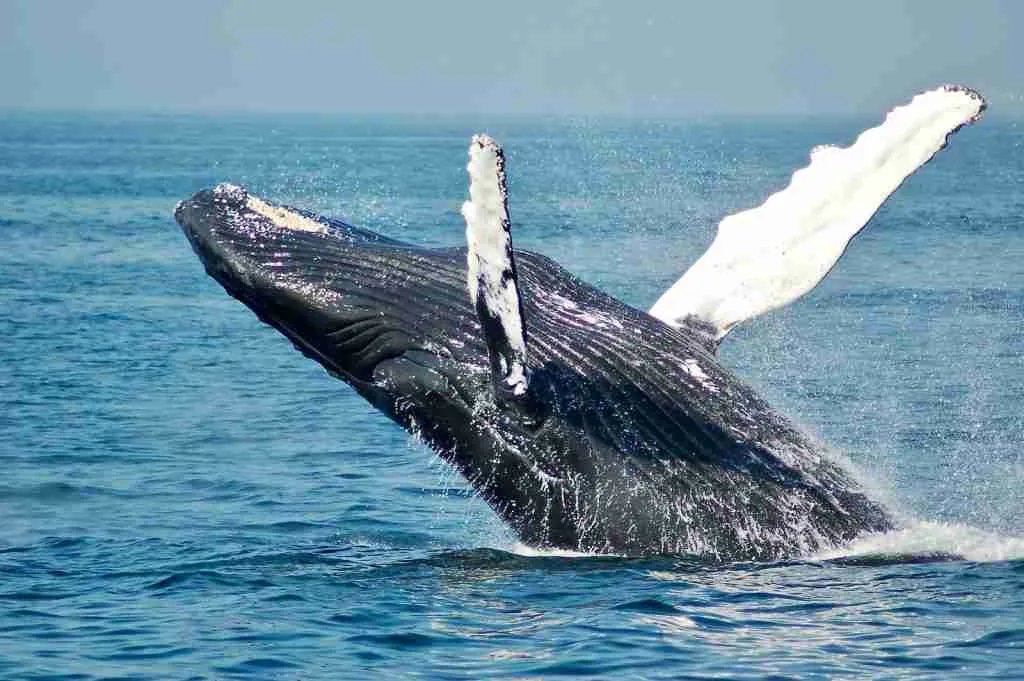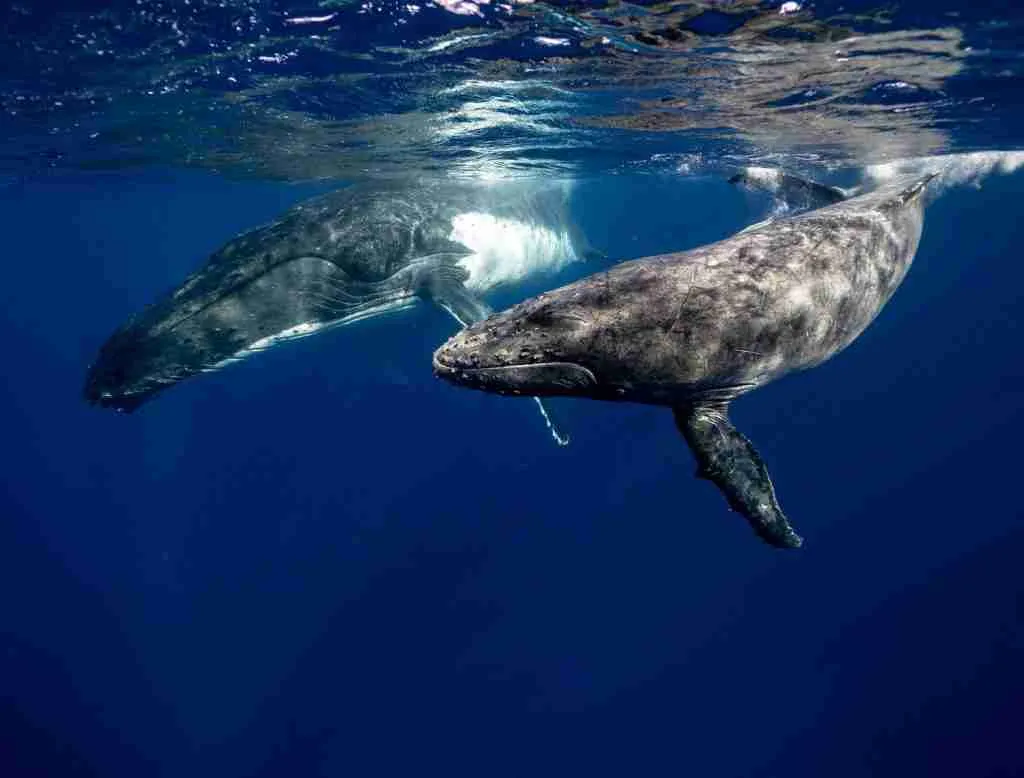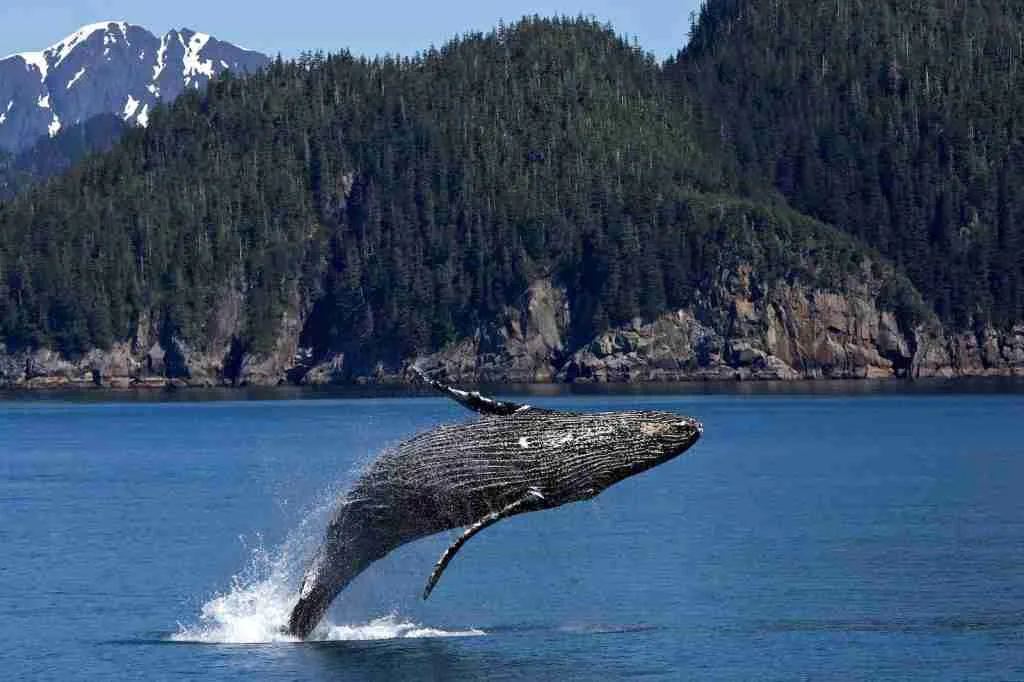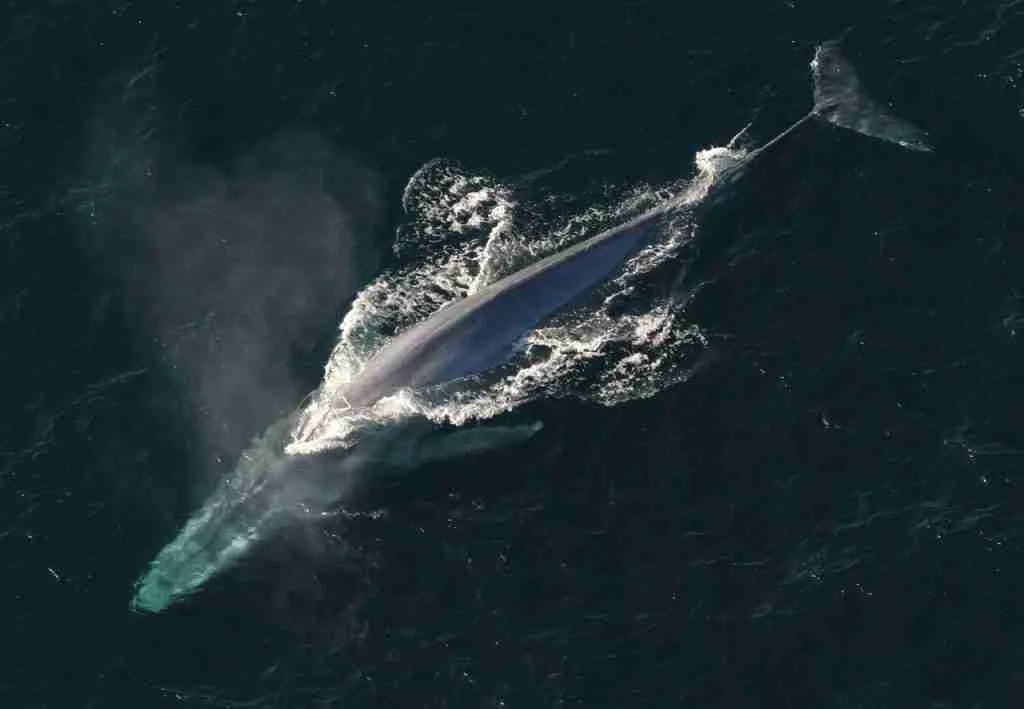23 Fun Facts About Whales | Nature’s Majestic Marine Mammals
-
Whales can weigh as much as 30 elephants combined.
-
A group of whales is called a “pod.”
-
Humpback whale songs can be heard over 20 miles away.
-
Whale poop helps stimulate phytoplankton growth.
-
Some whales have been recorded swimming up to 50 miles per day.
-
Whales can make sounds that are louder than a jet engine.
-
Orcas, a type of whale, are also called “killer whales.”
-
Some species of whales can communicate through echolocation.
-
Blue whales’ hearts are the size of a small car.
-
Whales can swim in almost complete darkness at depths of 10,000 feet.
-
Sperm whales can dive deeper than any other whale species.
-
A whale’s brain is larger than most other animals’ brains.
-
Whale skin can be very smooth, despite large barnacles growing on them.
-
Male humpback whales can sing for up to 24 hours without stopping.
-
A single baleen whale can filter 4 tons of water in one feeding session.
Table of Contents
1. Complex songs are used by whales to communicate.
Whales are known for their incredible vocalizations. These songs can travel great distances, allowing whales to communicate across vast ocean expanses.
Male humpback whales are particularly famous for their songs, which can last for hours. These songs are often shared among populations in different regions.
2. The blue whale is the largest animal on Earth.
Stretching up to an astonishing 100 feet (30 meters) in length and weighing an incredible 200 tons, its sheer size leaves us in awe.
To put it into perspective, the tongue alone of a blue whale can weigh as much as an elephant, and its heart is comparable in size to a small car.
Blue whales are found in all of the world’s oceans, except for the Arctic and Antarctic.
3. A blowhole is used by whales for breathing.
Whales breathe through a blowhole located on the top of their head. This specialized opening allows them to take quick breaths at the surface.
Depending on the species, whales can have one or two blowholes. These blowholes are vital for their survival, especially during deep dives.
4. Whales breathe air at the water’s surface.

READ ALSO: 22 Fun Facts About Pandas | Unleashing the Cuteness
Whales, being mammals, have a unique way of breathing. Despite living in water, they are air-breathing creatures and must come to the water’s surface periodically to breathe.
Whales breathe through the blowhole located on the top of their head.
This adaptation allows them to take in fresh oxygen and expel carbon dioxide. Remarkably, some whale species, such as the sperm whale, have an impressive breath-holding ability and can stay submerged for up to 90 minutes before resurfacing.
5. The longest migration belongs to whales.
Every year, some whale species travel thousands of miles for breeding and feeding. Their migrations are considered the longest of any mammal on Earth.
The gray whale, for instance, migrates over 10,000 miles between the Arctic and the Baja California coast. This incredible journey takes several months.
6. Massive daily food consumption is needed by whales.
To maintain their enormous size, whales need to consume massive amounts of food. Some species, like the blue whale, can eat up to 4 tons of krill in a single day.
Despite their massive appetites, whales do not hunt other large animals. Most species feed on smaller organisms like krill, plankton, and small fish.
7. Teeth or baleen are present in different species of whales.
Whales can have either teeth or baleen, depending on the species. Toothed whales, such as orcas, use their teeth to hunt and catch prey.
On the other hand, baleen whales like humpbacks have comb-like structures to filter plankton from the water. This helps them consume large quantities of small prey.
8. The narwhal is also known as the unicorn of the sea.

READ ALSO: 24 Fun Facts About Penguins You Never Knew
The narwhal’s remarkable feature sets it apart from other whale species. Its long, spiral tusk, reminiscent of a mythical horn, is, in fact, an elongated tooth. This extraordinary tusk can grow to an impressive length of up to 10 feet (3 meters).
While scientists are still studying the exact purpose of the narwhal’s tusk, it is believed to play a role in communication, sensory perception, and perhaps even in breaking through the ice during its Arctic habitat.
Narwhals are found in the Arctic Ocean and eat fish, squid, and other small marine animals.
9. Whales can hold their breath for over 30 minutes.
Many whale species are capable of holding their breath for extended periods. This allows them to dive deep into the ocean without needing to surface for air constantly.
For instance, sperm whales can dive for up to 90 minutes, hunting for squid in the deep ocean. Their ability to hold their breath is vital for their survival during deep dives.
10. Tail slaps are a form of communication for whales.
Whales often use tail slapping as a form of communication or to express frustration. The sound can be heard over long distances and signals various behaviors.
Tail slaps are also believed to serve as a means to ward off predators or mark territory. The power behind the slap is incredible, creating large splashes in the water.
11. A thick layer of blubber helps insulate whales.
Whales are equipped with a thick layer of blubber beneath their skin, which helps insulate them from the cold waters of the ocean. This blubber also serves as an energy reserve during long migrations.
In fact, some species of whales have over a foot of blubber. It plays a crucial role in keeping them warm, especially in colder, deeper waters.
12. Sperm whales have the largest brain of any animal on Earth.
READ ALSO: 24 Fun Facts About Llamas | Surprising Details About These Furry Camelids
Sperm whale brain weighs up to 18 pounds (8 kilograms). This remarkable brain size is a testament to their intelligence and complex cognitive abilities.
As they dive to astounding depths in search of prey, their brain power undoubtedly plays a crucial role in navigating the depths and communicating with fellow pod members.
They use their echolocation to find food in the ocean’s dark depths.
13. Fins are used by whales for balance.
Whales rely on their fins to maintain balance and stability as they swim. Their large dorsal fins and pectoral fins help them steer and navigate through the water.
For example, humpback whales are known for their uniquely shaped pectoral fins. These fins help them make sharp turns and maintain precision while swimming.
14. A vital role in maintaining the ocean’s health is played by whales.
Whales contribute significantly to the ocean ecosystem. Their presence affects the food chain, and they play a role in the health of oceanic food webs.
When whales die, their bodies provide vital nutrients to deep-sea ecosystems. This process, known as a “whale fall,” helps sustain life in the ocean’s depths for years to come.
15. The heart of a whale is massive.
The heart of a whale is the size of a small car, weighing up to 400 pounds. This enormous heart is necessary to pump blood throughout the whale’s large body, especially during deep dives.
Whale hearts can beat very slowly during dives, conserving energy. When they surface, the heart rate increases to restore oxygen to the body quickly.
16. Whales are found in oceans and seas worldwide.

READ ALSO: 26 Interesting Facts About Peacock (The Bird with the Bling)
Whales, the majestic marine wanderers, traverse the vast expanses of our planet’s waters, adapting to a wide range of habitats.
These magnificent creatures roam the world’s oceans and seas from the freezing Arctic to the chilling Antarctic. Their extraordinary journeys take them through shallow coastal waters and into the deep expanse of the open ocean.
Whales are divided into two groups: baleen whales and toothed whales. Baleen whales have baleen, which is a comb-like structure used to filter food from the water. Toothed whales have teeth, which they use to catch and eat prey.
17. The lifespan of whales varies by species.
Some of these incredible marine giants can astonish us with their longevity, living well over 200 years. On the other end of the spectrum, certain whale species have a relatively shorter lifespan, averaging around 40 to 70 years.
This diversity in lifespans highlights each species’ unique biology and ecological adaptations.
From the majestic bowhead whale, which can live for centuries, to the charismatic orca, which may live around 50-80 years, the remarkable range of whale lifespans adds to the intrigue and complexity of their lives in the deep blue sea.
18. The largest whale species, the blue whale, can be over 100 feet long.
Blue whales are not just the largest whales—they are the largest animals to have ever lived. A blue whale can grow to lengths exceeding 100 feet, which is longer than three school buses lined up.
With such a massive size, blue whales weigh as much as 200 tons. Despite their size, they feed primarily on tiny organisms like krill in vast quantities.
19. Whales’ milk is rich and nutritious.
Whale milk is incredibly thick and rich in fat, providing essential nutrition to the calves during their early development. This milk helps young whales grow rapidly and gain strength.
In fact, a newborn whale can gain up to 200 pounds a day from nursing. The high-fat content in whale milk is vital for the growth of their large bodies.
20. The gray whale has friendly and curious behavior toward humans.

READ ALSO: 25 Facts About Rainbow Trout You Need to Know
Often approaching boats and displaying inquisitive behaviors, such as spy-hopping and breaching, the gray whale’s interactions with humans leave a lasting impression.
These encounters provide a rare opportunity for people to connect with these magnificent beings, fostering a deeper appreciation for marine life and the need to protect their delicate ocean habitats.
Gray whales are found in the Pacific Ocean, and they migrate between their feeding grounds in the Arctic and their breeding grounds in the Baja California Peninsula.
21. Whales’ baleen can filter up to 10 tons of water a day.
Baleen whales are able to filter enormous amounts of water every day. Their baleen plates act like a sieve, filtering out krill and small fish from the water as they swim.
This allows them to consume massive quantities of food, with some baleen whales filtering up to 10 tons of water each day.
22. The blue whale’s heart can weigh as much as a car.
The heart of a blue whale is not only massive in size but can also weigh up to 400 pounds. This enormous heart is necessary to pump blood throughout the blue whale’s gigantic body.
Despite its massive size, the heart beats slowly to conserve energy, especially during deep dives.
23. Some species of whales, like the bowhead whale, have been found with ancient harpoon points.
These artifacts serve as a testament to the harrowing encounters these magnificent creatures have endured with whalers over the centuries.
Astonishingly, some of these harpoons date back to the 19th century, suggesting that these whales can live well over 100 years, making them one of the longest-living mammals on Earth.
The bowhead whale is the most hunted whale species, and it is thought that over 200,000 bowhead whales were killed in the 19th century.
FAQs
Whales are large marine mammals that belong to the order Cetacea. They are known for their size, intelligence, and deep ocean habitats. They can be found in oceans worldwide and come in two types: baleen whales and toothed whales.
Whales often engage in playful behaviors, such as breaching (jumping out of the water), tail slapping, and playing with objects in the ocean. These activities may help them bond, practice survival skills, or just have fun.
Whales are unique due to their size, intelligence, and complex communication methods. They are also the only mammals that live entirely in the water. Their migration patterns and social behaviors set them apart from other animals.
No, whales do not have 13 stomachs. They typically have one stomach with multiple chambers, depending on the species. This specialized stomach helps them digest large amounts of food, like krill or fish.
Many whale species undertake remarkable migrations, often traveling long distances between feeding and breeding grounds. These migrations are driven by factors like seasonal changes in food availability and the need to find safe and warmer waters for calving and mating.





